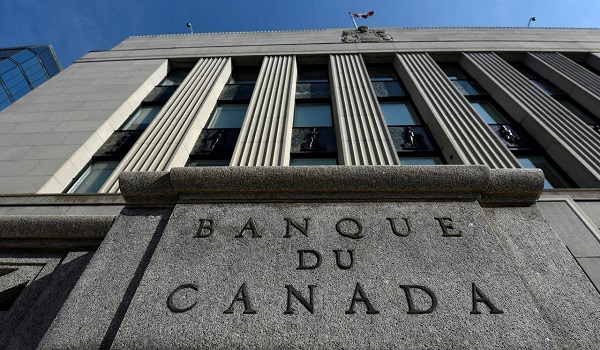Bank of Canada warns of the significant increase of hedge funds on borrowing profit from falling rates
Shortly after the Bank of Canada released its latest financial stability report last week, Brian D’Costa started getting calls from worried clients.
They were concerned about a warning issued by the central bank about hedge funds and pension funds having significantly increased the amount of money they borrow through the repo market.
Repos, shorthand for repurchase agreements, are essentially short-term loans backed by high quality collateral such as government bonds. They technically involve selling an asset with a promise to buy it back later. Financial institutions use repo markets to lend or borrow overnight or for short periods of time, typically less than a month.
Canadian asset managers have increased their repo market borrowing – otherwise known as leverage – by 30 per cent over the past year, according to Bank of Canada data. For hedge funds, repo leverage is up 75 per cent.
This has largely been to finance something called a “cash-futures basis trade,” which seeks to profit from discrepancies between the price of bonds and futures contracts, at a time when interest rates are expected to move downward.
“The folks that called us are aware that we leverage, we make sure people understand how we use leverage and how it benefits the returns,” Mr. D’Costa, co-founder and president of alternative fixed income hedge fund Algonquin Capital, said in an interview. “They were asking if this was something they should be worried about. I told them that we are not complacent about the fact that we use leverage.”
Algonquin also does not generally engage in basis trading, he said. The Bank of Canada’s concern, however, relates to the potential for asset managers who are more complacent about utilizing a strategy that, if overused, could pose a systemic risk to the entire financial system.
“We’ve seen an increase in borrowing particularly in repo markets, of hedge funds,” Bank of Canada Governor Tiff Macklem said in a May 9 press conference about the FSR. “In the event that there was a sudden repricing, a sudden change in bond prices, a big change in yields, there could be a situation where either because of margin calls or need to unwind those trades, they could have to sell the bonds into a weak market. And that could really amplify the market swings.”
Repo markets are not necessarily risky. In fact, they underpin much of the Canadian and global financial system, and repo borrowing is among the most common financing methods utilized by major mortgage providers and other financial institutions. Problems, however, can arise when borrowers take on too much leverage in repo markets, especially at moments when the prices of bonds – the collateral in these trades – are volatile.
“If there are certain participants in the market who are taking on too much leverage that could certainly be a financial stability concern,” said Vinayak Seshasayee, executive vice-president and head of Canadian fixed income for the Pacific Investment Management Company (PIMCO).
“If a fund has $100-billion in assets and they are borrowing $5-billion or $10-billion in bonds to increase their duration I think you could probably see that as reasonable. But if they are levering up two or three times I think this is the Bank of Canada saying ‘if you get into trouble and you have a problem, nobody is going to come and save you.’ ”
Much of the increase in repo borrowing, Mr. Seshasayee said, can be attributed to investors simply taking positions ahead of widely anticipated interest rate cuts in the coming months. Bond prices and yields move in opposite directions, meaning rate cuts from the central bank boost bond prices.
“Rather than issue a warning for the system as a whole, I think what they are trying to do is warn individual market participants and institutions: don’t overdo it – a little bit is fine but don’t get ahead of your skis,” he said.
While there is little reason to believe that is happening now, repo markets have been at the centre of market instability a number of times in recent decades.
The most recent example occurred in late 2022, when British government bond yields spiked and prices fell in response to a mini-budget from then-Chancellor Kwasi Kwarteng. This caught poorly positioned UK pension funds off guard, and sparked a fire sale for bonds as the funds rushed to raise cash to cover margin calls. The Bank of England eventually had to step in to backstop the repo market.
“The pension funds were all over-levered using repo,” said Ed Devlin, chief executive officer of investment fund manager Devlin Capital. “Anything that can happen that disrupts the repo market can now disrupt pensions. The increase in repo at pension plans, I don’t think it’s a crisis, but it is a vulnerability, a system-wide vulnerability that should be tracked.”
Mr. Devlin said he has seen the basis trade strategy used “over and over and over again, where you lever the crap out of a bond 50 times over and then you’ve turned 10-cent pricing into a 50-per-cent return on capital” because the profit potential on individual basis trades is quite small.
The need for substantial leverage in basis trading was a key reason why Mr. Macklem said the central bank wanted to “express some concern.”
“You don’t make very much money on any one trade. There’s a small discrepancy, you make a small amount of money. So in order to make this worthwhile, you need to do a lot of it and to do a lot of it, you need to borrow,” Mr. Macklem said.
If any investors that had, for example, $10-billion worth of basis trades in the market despite only having only $100-million in capital available because, Mr. Devlin said, they were “levering the daylights out of a small discrepancy in Canada, then yes I would see a system-wide problem there.”
The message the Bank of Canada is trying to send by mentioning repo usage and basis trading in its FSR, PIMCO’s Mr. Seshasayee said, is for investors to be very careful and prudent in how they size those sorts of positions.
Bank of Canada senior deputy governor Carolyn Rogers emphasized that message during the May 9 press conference.
“We don’t necessarily aim to limit the type of trade, but rather to make sure that the institutions that are making these trades are adequately margining for them,” she said. “You need to anticipate what would happen if the trade, or your motivation for leverage, turns the other direction and make sure you have a buffer to protect you against that.”
This article was first reported by The Globe and Mail












